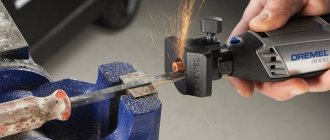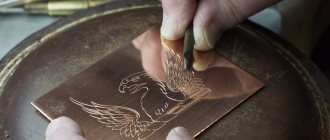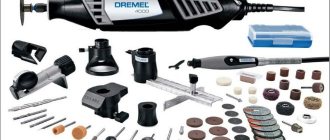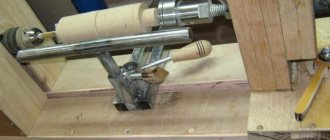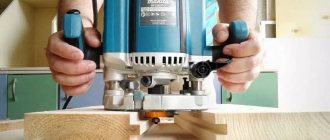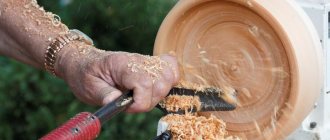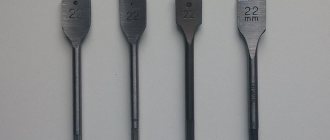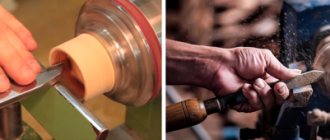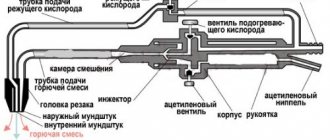Roller cutters or burrs have been used by humans for decades, and perhaps the history of this tool goes back hundreds of years. There are no sources on this matter. This invention of the human mind is a special attachment made of various metals, with the help of which cleaning, grinding, surfaces, and crushing of materials are carried out.
- By stone
- Domestic
Where can you use a cutter?
The cutter is used in many industries - construction, jewelry, mining, automotive, medical and other industries. There is no limit to the variety of these attachments.
A similar tool can be used to process metal and stone, plastic and wood. And if somewhere for more thorough cleaning you can use files or other similar tools, then, for example, to bore the cylinder head in any car, only cutters are used. Therefore, every car enthusiast should have a set of such tools in his garage.
When making plastic windows, you also cannot do without a burr in order to make the welded joint of the plastic profile as clean as possible. Roller cutters are used in the production of glass products - bottles, jars and other things.
The mining industry uses cutters with large diameters and high-strength teeth that enable powerful machines to crush stone with ease. For household work, small-diameter cutters are used, which are installed on an electric drill or other similar tool.
Perhaps many have seen how an engraver works, applying memorable inscriptions to various objects and souvenirs, the material of which is glass and stone, gold and silver, metal, wood and other materials. But few people have wondered why the master so skillfully makes such memorable inscriptions.
And this is still the same roller cutter, but smaller in size and of different shapes. The dental office also uses cutters, thanks to which the doctor has the opportunity to provide high-quality treatment and prosthetics to teeth.
In everyday life, any man who is intimately familiar with plumbing will say that without a cutter, which is an attachment to a drill, it is impossible to make a chamfer, install or remove a door lock, and perform a lot of other necessary operations.
Using a cutter, you can make a clean hole in glass and ceramic tiles, brick and stone, plywood and chipboard, and clean welding seams in places that are difficult for a file to reach. When installing window hinges and handles, you will also need a cutter. To work with different materials, devices are used that differ in their shape and material of manufacture.
What is a cutter and its use
People have been using and knowing what a cutter is for a long time. There are no reliable sources when and by whom it was created, but the first mentions of its prototypes were several centuries ago. The metal cutter has a simple design: it has a shank and a working head. The first is necessary for securing it in the chuck of a machine tool or drill, and the head grinds the metal surface.
Nowadays, a large assortment of cutters has been created, the heads of which are designed for specific purposes. Their geometric parameters differ significantly from each other and allow them to solve a highly specialized problem. We list the most common areas of application:
- mechanical engineering;
- construction;
- mining industry;
- medicine;
- jewelry making.
Application of the cutter
In the construction industry, cutters are used to process metal, stone, wood, plastic and glass. For example, when making PVC windows, joints are cleaned into which a milling cutter cannot fit. In mining, they are used in drills. In the jewelry industry, cutters allow you to engrave inscriptions and patterns, drawings, and also use them to process the surfaces and corners of precious metals and stones. In medicine, cutters are most popular among dentists because they play a major role in the drill. In everyday life, a metal cutter is used for a drill, which is simply attached to the chuck and facilitates minor repairs at home and in the country.
Thanks to the right choice of shape and material of a metal cutter, you can drill a hole, remove irregularities at the joints of products, sand seams and process places that cannot be reached with another tool.
What types of burrs are there?
A burr, a roller bit or just a roller cutter are made of different designs and from different metals.
By design they are:
- single-cone;
- double-cone;
- three-cone.
The shape of the head of this device can also be very diverse - in the form of a cone, cylinder, spherical, oval or semi-oval. The use of one or another cutter depends on the material of the workpiece and the task being performed.
Depending on the material, cutters made from:
- carbon steel;
- with diamond coating;
- abrasive spraying;
- carbide.
Balls made of carbon steel are most often used when working with a hand drill, electric drill or screwdriver. With the help of such burrs, you can get new clean and smooth holes of various configurations or increase the diameter of existing ones. These tools are the most affordable and, as a rule, are most often used in everyday life.
Diamond-coated cutters are a more professional tool, used for the finest grinding and boring. These cutters are best used when working with materials that are not particularly durable - glass, ceramics. At the same time, a diamond-coated burr is also used when processing high-strength materials, where a carbon steel cutter cannot cope.
A burr with an abrasive attachment is not much different from the previous tool in terms of its area of application. The size and shape of this cutter can be very different. Used in conjunction with an electric drill, screwdriver or hand drill. Can be used with engraving equipment.
Carbide cutters are used mainly in production where processing of hard materials is required - cast iron, heat-resistant steel, titanium alloy, stainless steel and other metals. Carbide cutters are excellent for processing welded seams. These attachments are used when working with powerful tools where the number of revolutions exceeds several thousand.
Types of tools and design features
According to the material used in the design, the types of metal cutters come from:
- carbon steel;
- diamond;
- abrasive;
- carbide.
Carbon steel is used in cutters, which are used in working with an electric drill. With their help, you can process wood and metal products, round corners, drill new holes and bore old ones. Its main advantage over other types of burrs is its low price.
Diamond cutters for metal are more often used in production, but they can also be found in the kit of a craftsman who does repairs. In addition to professional equipment, they are also suitable for electric drills. The working surface of such a cutter is coated with diamond coating. This allows you to grind and bore holes. Used for processing both brittle and hard materials.
Abrasive cutters
In terms of manufacturing technology and scope of application, an abrasive cutter is similar to a diamond cutter. Electrocorundum is often used instead of diamond chips. The short service life is compensated by the low cost.
Carbide cutters are used in production in powerful machines that allow rotation speeds of up to 60,000 rpm. They are used to process high-hardness steels and alloys, cast iron, titanium and much more. The use of carbide burrs allows for the best processing of welded seams.
The stores offer a variety of sets of metal cutters, which differ in head shape:
- cylinder;
- sphere;
- oval;
- parabola;
- tongue of flame;
- countersink.
The cylindrical shape allows you to bore holes (including blind ones), machine ends and internal corners. The end of such a cutter can be spherical or smooth. The first option will not allow you to do some operations, but it will be possible to use it instead of a sphere and save money on it. If the burr is coated with diamond or abrasive coating, then it can be used to sharpen the tool.
Diamond cutter
The spherical head is used for smoothing product edges, internal corners and welds, sharpening, grinding and much more. The oval shape of the head gives it versatility and gives it the capabilities of both cylindrical and spherical heads. When processing internal surfaces with such a cutter, there will be no deep groove left. Very often used in the automotive industry and auto tuning when processing engines and manifolds.
The parabolic contour can be sharp or rounded. In the first version, this will allow you to easily remove burrs in gear parts. The rounded shape allows you to make small grooves and process internal welds.
The most common type of burr is a flame-shaped attachment. It is universal and suitable for most operations, even on the most difficult surfaces and materials.
G-Cut cutter shape countersink
A countersink is a special cutter that is used to chamfer a hole. This can be done with a drill with a large diameter, but a countersink allows you to make a more even surface and angle of inclination.
How to choose cutters
The choice of such a tool depends on the intended work, what material will have to be worked with, and what specific operations are expected to be performed. Modern tools, as a rule, are all powered by electricity, where high speeds are maintained.
Therefore, when choosing a cutter, you should take into account the characteristics of an electric drill or screwdriver, their power and rotation speed. Surface treatment often depends on the chosen type of cutting of the cutter teeth, which can be:
- thin;
- universal;
- ultra-thin;
- for working on aluminum.
Carbide cutters should be used when processing non-ferrous metals. If you plan to process soft metal, you need a tool with a head with a reinforced sharpening. For harder materials, a diamond-ground cutter is used.
Using such a tool makes it possible to obtain a perfectly flat and smooth surface. In addition, much less time will be spent on such work, and the cutter head itself will serve for a long time.
There are burrs in which the head can be double sharpened, which has a positive effect on the efficiency of the processing of any metal surface.
But in order to always have the right cutter on hand, experts recommend purchasing sets that contain several types of burrs with different head shapes, differing both in material and in the method of sharpening them.
How to choose the right cutter
High performance of a burr depends on several factors, such as:
- the operations that will be carried out by it;
- workpiece or product material;
- size and shape of the object being processed.
It is necessary to choose cutters for a drill, guided by the power and rotation speed of this power tool.
Another important factor when choosing a burr is how the cutter teeth will be cut into metal. Teeth cutting can be:
- thin;
- universal;
- ultra-thin;
- for working with aluminum.
Non-ferrous metals can be processed with carbide cutters. Soft metal is easy to machine if a hardened tooth grind is used. Diamond and abrasive burrs are highly productive and can easily process hard materials. Double sharpening of the tool head increases productivity. Ultra-fine cutting allows you to grind surfaces.
Experienced craftsmen immediately buy large sets of cutters. This allows them to always have all types and forms of this tool available and cope with their favorite work situations.
How to properly use cutters for power tools
In order for working with this device to bring maximum satisfaction, it is necessary to follow some rules that will extend the operating time of both the cutters themselves and will not cause harm to power tools.
- It is necessary to maintain full contact between the cutter and the surface being processed, but you need to work with the cutter so that its tail part does not touch the surface being processed, since this can lead to the destruction of the junction of the head and the main part of the tool.
- Do not apply strong physical pressure to the cutter during operation. If excessive pressure is applied, the rotation speed of the electric drill decreases, as a result of which the tool may overheat, which will lead to its rapid deterioration, and the processing process itself will be reduced.
- You need to choose the right processing speed. At high speeds when operating a power tool with a cutter, the formation of surface unevenness and burrs is eliminated. In addition, the correctly selected operating mode will increase the service life of the electric drill and reduce energy consumption. In addition, at high operating speeds of the drill, the phenomenon of jamming of the cutter in the material being processed is eliminated, and corners and grooves can be processed more carefully.
- Like any tool that comes into contact with hard surfaces, cutter heads are also subject to wear and abrasion. And first of all, the cutting elements, that is, the teeth, suffer. To extend their service life, it is necessary to use a special lubricant, which is periodically applied to the head of the cutter. The lubricant will prevent overloading of the power tool and will help the cutter glide better over the surface being processed. In addition to lubrication during operation, it is recommended from time to time to immerse the cutter head in a liquid suspension, which can be liquid wax or synthetic machine oil.
If the burr head is severely worn, the tool must be changed. Otherwise, you will need to make strong physical efforts to achieve the desired result. And this is fraught with damage to both the cutter itself and the power tool.
Tips for treating various surfaces
Large industries have their own instructions and requirements on how to use burrs, but our task is to tell you, dear readers, how these devices should be used in everyday life.
Stone cutter
When processing stone surfaces, be it natural stone or artificial, which can be ceramic tiles, porcelain stoneware or marble, it is necessary to wet the treated surface with water.
And here it is important to ensure that moisture does not get on the operating power tool in order to eliminate the risk of electric shock. Supply wires, cables and their connections must be well insulated and located away from water.
Wood cutter
When processing surfaces made of wood or similar materials (multi-layer plywood, chipboard, fiberboard), cutters that have large notches or teeth are used.
In addition, it is necessary to choose the correct operating mode for an electric drill or screwdriver, because when working at high speeds, such a side effect as setting the tree on fire is possible.
Each power tool has a dial for adjusting the number of revolutions. If you smell burnt wood, you should quickly reduce the speed.
Roller cutter for ceramics and glass
Working with materials such as glazed ceramic tiles or glass requires special care and attention. First, you need to make the outline of the required hole on the surface using a forma-y cutter, after which the hole is selected with a roller cutter, the head of which is made in the form of a ball.
Cone manufacturers
Burrs today are produced by many companies and enterprises, both in our country and abroad. It is possible to order burrs according to an individual drawing. Since the scope of such a tool is large, it is not always possible to find the required analogue on sale.
Domestic manufacturers
Among the domestic manufacturers, we can note such enterprises producing cutters as:
- Geomash, which produces burrs with a diameter from 76 to 490 mm.
- "Praktika", producing diamond-coated roller bits.
- Delo Tekhniki is a Russian manufacturer of metalworking tools.
- "Zubr" - produces rollers with abrasive heads.
- Burintech mainly produces powerful cutters for drilling wells of various types (oil, mining, gas).
Foreign manufacturers
Among the most popular foreign products are products for grinding and other plumbing work from companies such as:
- German Karnasch.
- Chinese Sturm, producing diamond-coated cutters. Although the brand itself was developed in Germany.
- Kraftool I/E GmbH, of German origin, whose products are sold under the STAYER brand.
- GROSS, also of German origin. Appeared on the market since 2008.
- Dremel is an American company that produces silicon carbide burrs.
- Norton company, which produces cutters with abrasive and diamond coating.
Watch a video on working with burrs:
Whatever manufacturer you choose, do not forget that you may always need more than one cutter, so it makes sense to purchase sets of these devices so that each individual case has its own burr.

